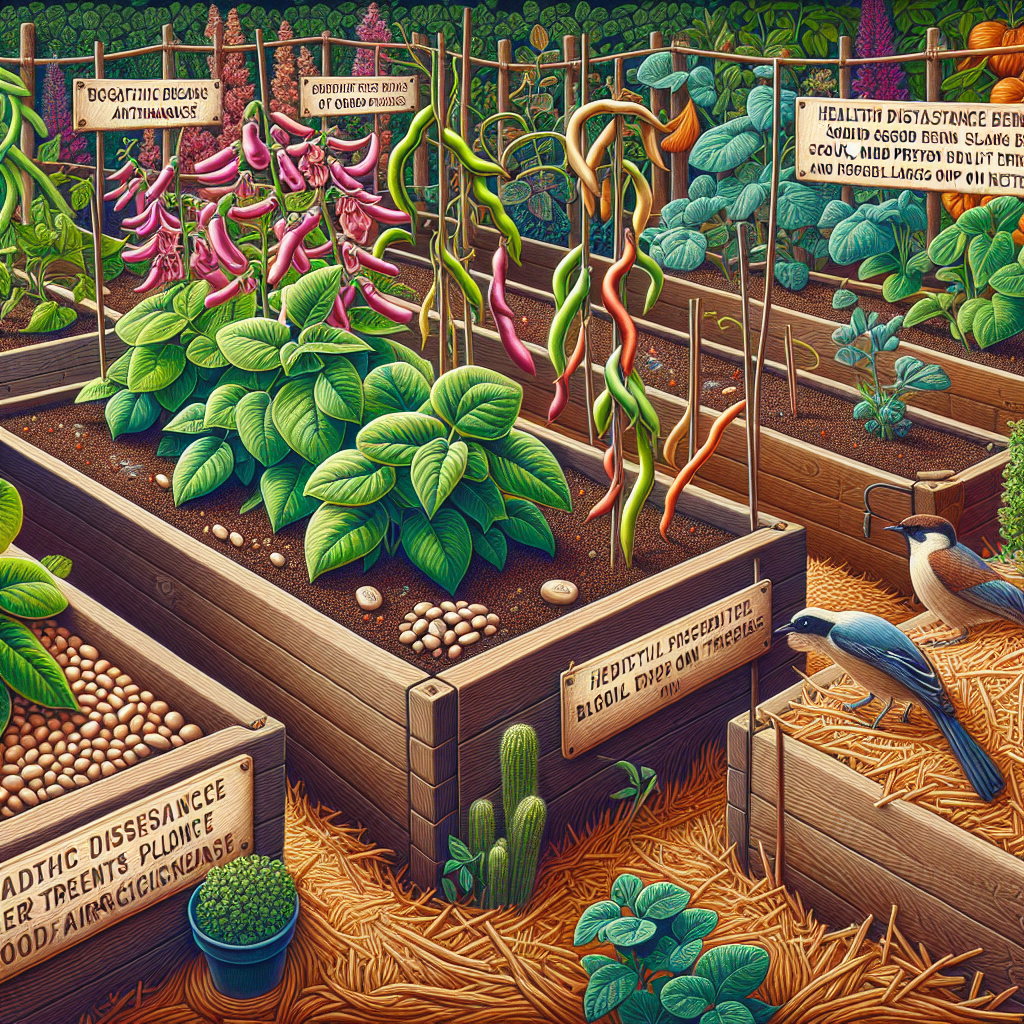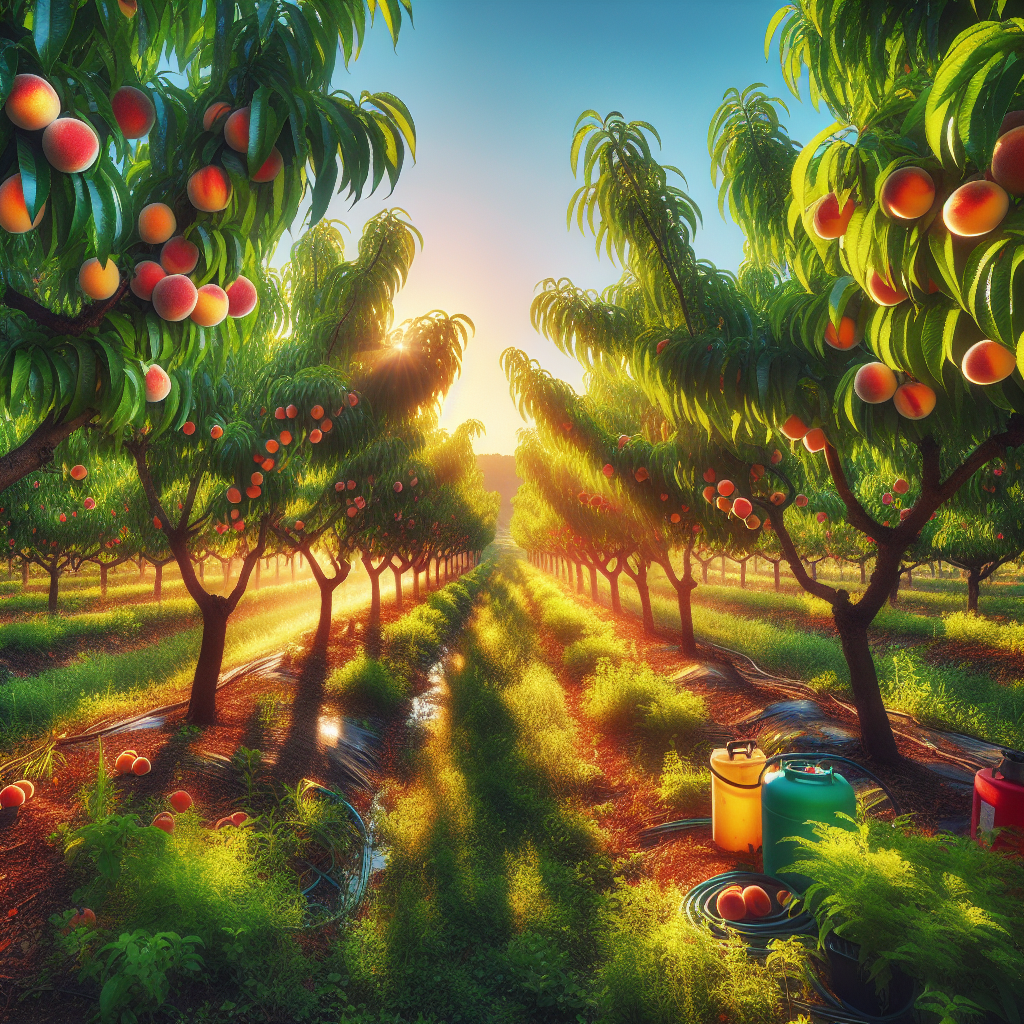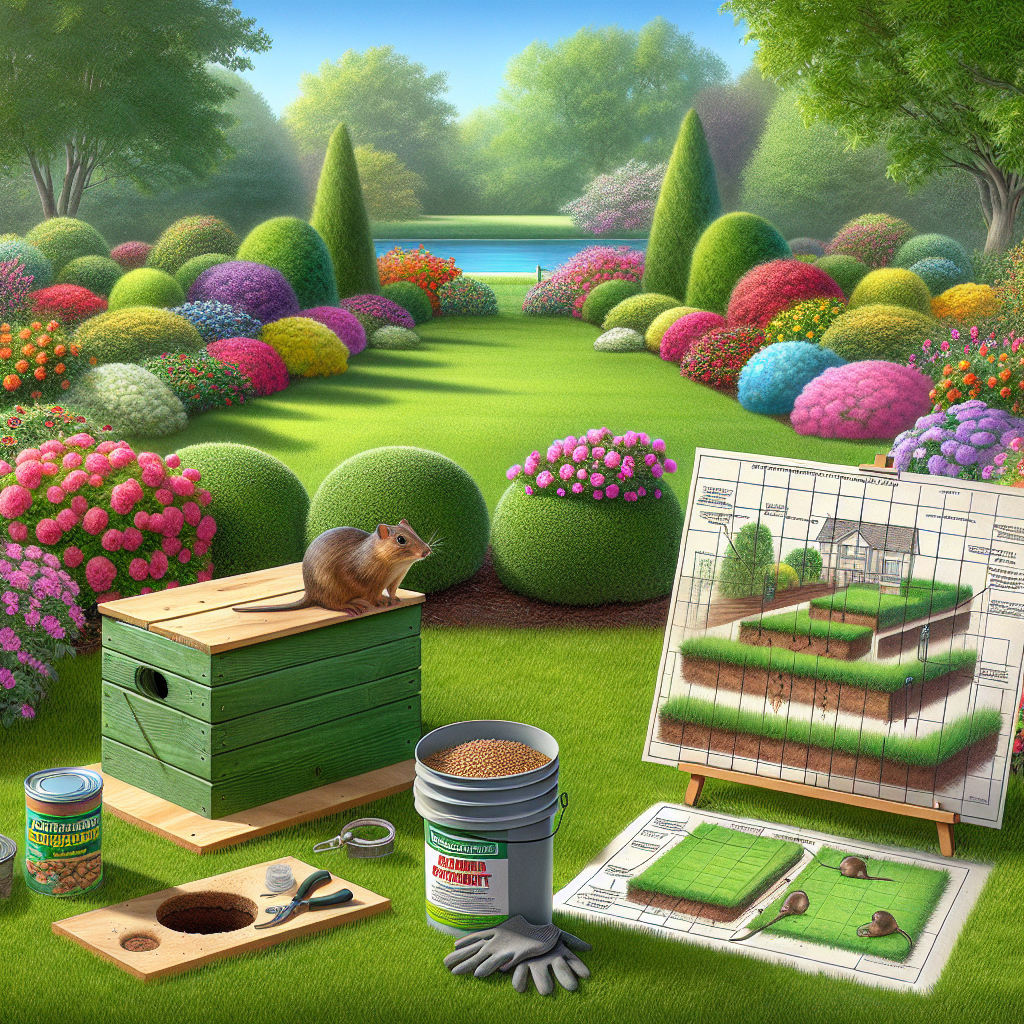Preventing Anthracnose on Beans and Legumes
Updated June 25, 2024 at 7:17 am
Discover effective strategies to combat anthracnose, a common fungal disease, on beans and legumes, ensuring a healthy and bountiful harvest through practical prevention and treatment methods.

Understanding Anthracnose in Beans and Legumes
Overview of the Disease
Anthracoidea sits among the more alarming blemishes you might encounter on your bean plants or legumes. It manifests as dark, sunken lesions that can appear on leaves, stems, pods, or even the beans themselves. Understanding this disease is the first step toward maintaining a healthy, productive garden.
Signs of Anthracnose Infection
Identifying the Symptoms
Keep an eye out for telltale signs like irregular brown or black spots on foliage, which can eventually lead to leaf drop. Withered-looking plants or stunted growth can be a sign that the disease has taken hold below the surface. This fungal foe shows no mercy, invading during any stage of development, from sprouting seedlings to fully mature plants.
Climate and Conditions That Favor Anthracnose
Ideal Environments for the Disease
Anthracoidea thrives in warm, damp conditions where it can quickly propagate and spread. High humidity levels and moist leaves from rainfall or irrigation systems can invite this fungal adversary into your garden, turning it into a battleground.
Preventative Measures for Healthy Plants
Cultural Controls and Hygiene
Every good defense begins with preparation, and in the case of anthracnose, that means planting disease-resistant varieties whenever possible. Proper spacing between plants ensures good air circulation; a well-ventilated garden is less inviting for fungi looking to settle down. Moreover, crop rotation can be an effective strategy in keeping diseases at bay, as some of our previous insights on winter vegetable gardening can attest.
Chemical Treatment Options
Fungicides and Their Application
In dealing with an advanced invasion of anthracnose, a chemical fungicide may well become a necessity. It’s important to read labels carefully and to apply the product according to the manufacturer’s instructions.
If you are currently struggling with anthracnose in your garden, keep reading for a comprehensive approach to tackling this issue head-on, protecting your beans and legumes for a bountiful, healthy harvest.
Early Identification and Immediate Actions
Spotting Anthracnose Early
Eagle-eyed vigilance is critical for early identification. The quicker you notice those small, discolored lesions on the leaves or stems of your plants, the faster you can act. Remove any affected parts immediately to prevent the spread.
Combining cultural control methods with timely interventions can also mitigate the damage caused by anthracnose. Be sure to dispose of any infected plant materials far away from your garden to curtail the spread of this unwelcome visitor.
The Role of Fungi in Soil Health
Believe it or not, not all fungi are foes in the garden. A balanced ecosystem below the soil can promote plant health and resist diseases, as also can be seen in our discussion on maximizing harvest. Beneficial fungi, like mycorrhizae, can form symbiotic relationships with your plants, enhancing nutrient uptake and bolstering their defences against pathogens.
However, some unfriendly fungal characters, like the anthracnose pathogen, can disrupt this harmony. Managing soil health and ensuring good drainage goes a long way in preventing the conditions that allow diseases like anthracnose to flourish.
Strategic Watering Practices
Watering without Inviting Disease
Watering at the right time can be just as important as how much you water. Morning irrigation allows the sun to dry foliage before the cooler evening temperatures roll in, which can dampen the spirit of anthracnose spores seeking new territories to conquer.
Moreover, using drip irrigation or soaker hoses to water directly at the base of plants can keep foliage dry, thereby reducing the potential for fungal diseases. Optimizing watering practices, as well as mulching to avoid splash-back of spores from the soil, are simple yet effective strategies to keep plants healthy.
Importance of Sanitation in the Garden
Keeping it Clean
Cleanliness, they say, is next to godliness, and it turns out it’s also next to plant healthiness. Sanitation goes beyond just tidy appearances; it’s about creating an environment that’s less conducive to the proliferation of pathogenic fungi. This means regularly cleaning and sterilizing tools, particularly those used to cut or prune, as well as keeping the garden free from debris and plant waste that could harbor fungal spores.
Please continue for more detailed information on the specific treatments and practices that can help you manage anthracnose and protect your beans and legumes from this destructive disease. We’ll explore chemical treatments, organic remedies, and discuss the importance of selecting resistant cultivars for your garden.
Organic Treatment Methods
Natural Remedies for Anthracnose
For those looking to tackle anthracnose without the use of harsh chemicals, there are organic options at your disposal. Neem oil, for example, is a powerful natural fungicide and insecticide, taking down anthracnose spores while keeping pesky pests at bay. A diluted solution can be sprayed on the affected bean plants, following the instructions carefully to prevent harm to the plant or beneficial insects.
Another option is to use a baking soda spray. This is a DIY method involving a mixture of baking soda, water, and a small amount of dish soap – which helps the solution adhere to the plant leaves. Regular application can prevent fungal growth and offer some relief from the disease.
Choosing Disease-Resistant Varieties
Investing in Resilient Cultivars
One of the most effective ways to minimize the risk of anthracnose is to start with the right seeds. Disease-resistant bean and legume varieties can significantly reduce the chances of infection. These cultivars have been bred to be more tolerant against the fungus, giving them an innate defense mechanism that can lead to fewer instances of the disease and less reliance on treatments.
Taking the time to research and select resistant varieties before planting could pay dividends when it comes to the health of your garden. Many seed suppliers provide details on resistance in their product descriptions, offering a prudent choice for the proactive gardener.
Crop Rotation and Diversity
Break the Cycle of Disease
Rotating crops is a time-tested method to prevent the buildup of pathogens in the soil. By changing what’s planted in a location from year to year, you can disrupt the life cycle of diseases like anthracnose. It’s also advantageous to diversify your garden’s planting plan. A varied planting scheme can help minimize outbreaks, as not all plants are susceptible to the same diseases, and it creates a more challenging environment for pests and pathogens to thrive.
Remember, a diverse garden is a resilient one. Introducing a variety of species and cultivars not only aids in disease resistance but can also enhance the overall health and beauty of your garden, as recommended in our resource on developing a pollinator-friendly environment.
Mulching to Prevent Anthracnose
Using Mulch as a Protective Barrier
Mulching can be an ally in your fight against anthracnose. A layer of mulch helps maintain an even soil temperature, retains moisture, and most importantly, it acts as a barrier between the soil and the plant. This reduces the chance of spores splashing up onto the plant during watering or heavy rain. Organic mulches, such as straw or leaf litter, have the added benefit of decomposing and enriching the soil while providing direct protection against fungal diseases.
Accurate application is key—too much mulch can retain excessive moisture and lead to other issues, so aim for a balance that benefits plant growth and protection.
Utilizing Biological Controls
Bringing in Beneficial Organisms
Biological control involves utilizing naturally occurring enemies of the anthracnose pathogen to keep it in check. Beneficial microbes like Bacillus subtilis or Trichoderma species, both available in commercial products, can be introduced into the soil around your beans and legumes. These organisms can outcompete or directly antagonize several plant pathogens, including the culprits behind anthracnose, offering an eco-friendly approach to disease management.
It should be noted that results can vary, and these methods need to be a part of a comprehensive disease management strategy to be effective. Applying these controls in conjunction with proper cultural practices boosts their effectiveness and provides a well-rounded defense for your garden.
Find This and More on Amazon
Monitoring and Regular Inspections
Keeping a Watchful Eye on Your Crops
Prevention is pivotal, but so is monitoring. Regular inspections of your bean and legume plants are necessary to catch any signs of anthracnose early on. Checking leaves, stems, and pods not only for the characteristic lesions but also for any signs of stress or unusual symptoms will help you stay ahead of potential outbreaks.
This routine can become a relaxing part of your gardening regimen, offering you time to enjoy the fruits of your labor while ensuring the health and productivity of your crops. Documenting your observations can also be invaluable, helping you track progress and patterns that may emerge over time.
We’ve looked at various angles to approach anthracnose management, so let’s carry on to more ways to keep your beans and legumes thriving.
Advanced strategies for Managing Anthracnose
Embracing Technology for Disease Tracking
With technology at our fingertips, why not use it to bolster our fight against anthracnose? There are applications and tools available that can help to track the spread and intensity of diseases in your area. Moisture and temperature sensors can assist in maintaining optimal conditions to keep anthracnose at bay. This data can guide your watering schedule and other garden activities, limiting the periods when fungi can thrive.
Farmers and gardeners who manage larger areas may find weather tracking and disease-forecasting models particularly useful. These systems analyze the local climate and advise when conditions are conducive to the development of plant diseases, providing a chance for preemptive action.
Expert Advice and Extension Services
Leveraging Professionals
If you’re battling anthracnose and would like more localized advice, consider reaching out to your cooperative extension service. Agriculturists and plant pathologists there can provide a wealth of information tailored to your specific circumstances. They can offer insights into the optimal use of fungicides or biological controls, and the latest research in disease-resistant cultivars that are well-suited to your region.
Extension services can also provide soil testing, which is an invaluable tool in determining the health of your garden’s ecosystem. Healthy soil can suppress disease, and knowing its composition can guide you in adjusting it, if necessary, to be more unfavorable for pathogens like anthracnose.
Integrating Pest and Disease Management
Fostering a Holistic Garden Approach
Pest management goes hand in hand with disease management. Insect pests often act as vectors for disease, transferring anthracnose spores from infected plants to healthy ones. By maintaining a balance in the garden that promotes the presence of predator insects, you can reduce the spread of both pests and pathogens.
Companion planting can aid in this effort, as some plants naturally repel insect pests or attract beneficial insects. Not only can this protect your beans and legumes, but it also contributes to biodiversity and the overall aesthetic appeal of your garden space.
Long-Term Commitment to Healthy Gardening Practices
Adopting a Garden-Wide Philosophy
Preventing and controlling anthracnose is a long-term commitment that requires consistent attention to the health of your garden ecosystem. By adopting practices like composting to improve soil health, maintaining cleanliness, and fostering beneficial wildlife like birds and insects, you’ll be cultivating not just your plants but also a robust, resilient garden microclimate.
These methods collectively contribute to a natural resistance to anthracnose and other diseases. Remember, a healthy garden is less likely to succumb to fungal diseases, so invest the time and effort into creating a nurturing environment for your plants to flourish.
Final Thoughts on Managing Anthracnose
Gardening as an Evolving Science and Art
Dealing with anthracnose on beans and legumes can be daunting, but with the right knowledge and tools, it can be managed effectively. By incorporating strategic planning, a mix of cultural, biological, and chemical controls, as well as staying informed and committed, you can minimize the impact of this disease.
Remember, every challenge in the garden is an opportunity to learn and grow as a gardener. The strategies discussed here, along with a dedication to nurturing your garden, will support your efforts in keeping anthracnose under control, ensuring your plants stay healthy and productive throughout the season.
Shop more on Amazon
Flowers & Plants Team
Flowers & Plants Team


